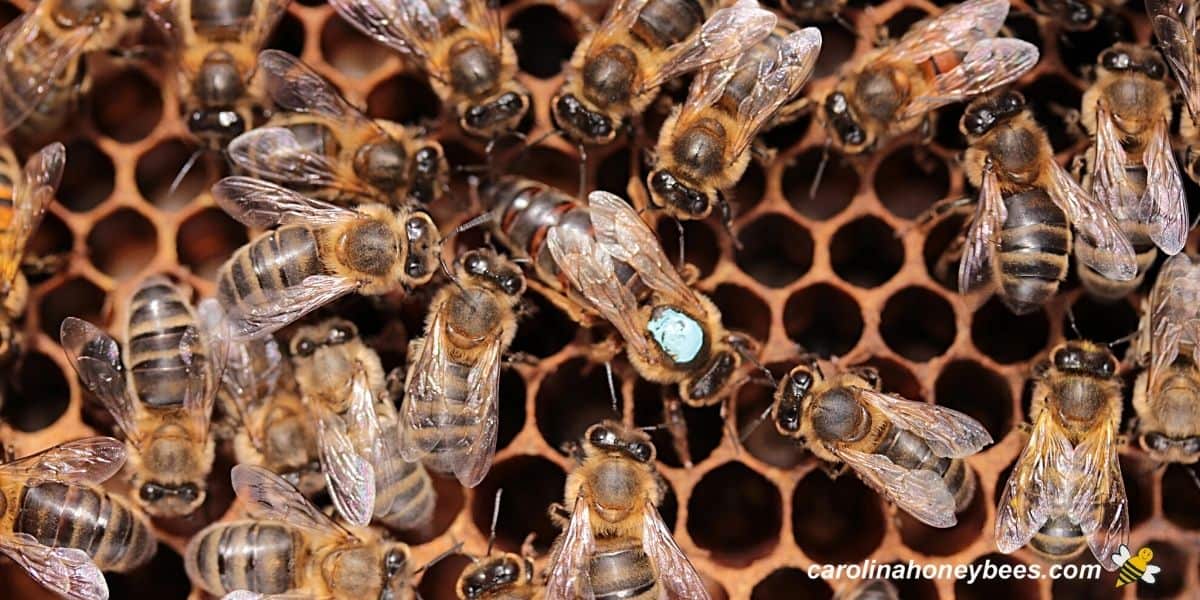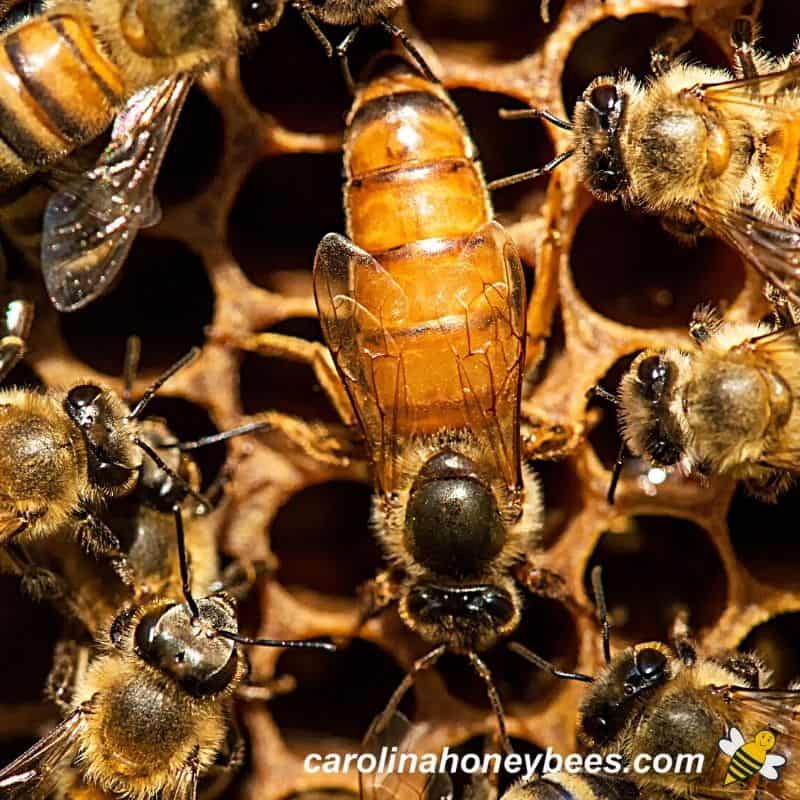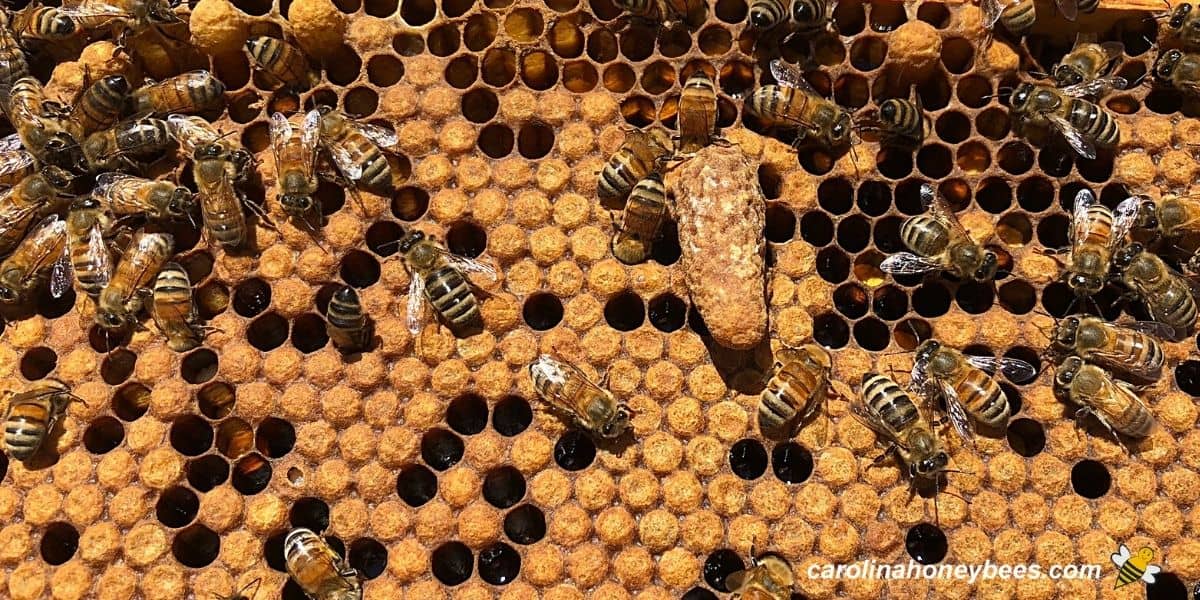Queen Bee Facts
Let’s explore some amazing facts about the queen bee. She is not a ruler but an intricate thread in colony life. The queen bee is the most well-known member of a honey bee colony. Every part of colony life revolves around this important individual. She can not live without the other members of the hive. But, a colony will not survive for long without her either.

The members of a honey bee colony work together for the benefit of the whole hive. But, the role of the queen bee is so important – it can not be duplicated by any other individuals.
Fascinating Queen Bee Facts
Honey bees have been studied for thousands of years. We still do not know everything about their life. There are still many questions about honey bees to discover. But, we have learned a lot about bees and how they function as a family.
One obvious standout is of course – the queen. Prepare to learn some new facts about the queen that you may not have heard before. And perhaps, we will dispel a few myths too.
The queen honey bee is a hive standout in several areas:
- reproduction marvels
- size and appearance
- mating insights
- stinging abilities
- egg laying
- leadership in the hive
Reproduction
The queen honey bee is the only member of the colony capable of mating and laying fertilized eggs. Fertilized eggs develop into female worker bees – a colony needs thousands of workers to maintain the hive.
When her egg laying abilities start to diminish, the colony will make a cohesive decision to replace her. Worker bees kill the queen and rear a new one from the provided fertilized eggs.
Size and Appearance
Due to the larger size of a queen honey bee compared to workers, she is fairly easy to distinguish. That’s a great thing for beekeepers who have to learn how to find the queen in a beehive.
Her long, tapered abdomen holds ovaries containing thousands of bee eggs to be laid during her lifetime.
Otherwise, she has basically the same honey bee anatomy as her nest mates – but she does lack pollen baskets. She does not work outside the hive.

Mating of the Queen
A virgin queen honey bee leaves the hive to mate – honey bees reproduce differently than some insects. The queen only mates during a few days in young adulthood and never again.
After mating with several male bees (drones), she stored semen in a special organ located in her abdomen called – the spermatheca.
Unique Stinging Abilities
A queen bee does have a stinger but it is different than that of worker bees. Her stinger lacks the barb at the end. It is not used for colony defense – but rather to kill her rivals.
When a colony needs a new queen, they build several queen cells. Only one can become queen – the first virgin queen to emerge will seek out and kill the others.
Efficient Egg Laying
Egg laying is such an important part of colony life-that the queen bee can lay thousands of eggs per day during peak season.
This is necessary to sustain colony population. Honey bees do not live for very long – a constant source of new bees is necessary.
Leadership in the Colony
Now, we must dispel a myth. In fact, queen bees are not in charge. They do not rule the colony and make important decisions. It is the collective decision-making process of worker bees that direct colony actions.
However, the role of pheromones in the bee colony can not be overlooked. Queens do emit special pheromones that tell the colony that she is present and doing her job. This sense of peace is important to daily hive life.

How a New Queen Bee is Made
In spite of the best planning, bees don’t live forever. If the queen bee dies, the colony must spring into action quickly.
If the queen bee is missing, the colony known right away. Some resources say that the bees can recognize her absence within 15-30 minutes and replacement plans begin.
The life cycle of a queen honey bee begins with a fertilized egg. Tiny female bee larvae are selected and fed copious amounts of rich food by nurse bees.
This causes the larvae to develop into reproductive females capable of mating. (For years, it was believed that a substance bees make called royal jelly was responsible for reproductive development in bees. Today, researchers believe that other food substances are involved in this process too.)
Approximately 16 days after egg is laid, the new virgins emerge. One will survive to rule the colony. Mating takes place in mid-air with 12-20 drones from other colonies at drone congregation areas. This promotes genetic diversity in the colony population.
A hive without a queen bee is “queenless” and the colony recognizes the severity of the situation. Workers begin the process of replacing her within hours.
It takes 16 days for a new queen to be produced and additional time for her to mature and mate. The future of the hive depends quick decision making by members of the colony.
Sometimes, beekeepers need to buy a new queen bee for colonies unable to produce one.

FAQs
Final Thoughts
When we study the facts about queen bees and the things they do and don’t do – we are entering the very heart of hive life. While the queen is vital to colony life, she does not actually rule the colony as one might think. Instead, the whole colony survives due to the collective efforts of all.

